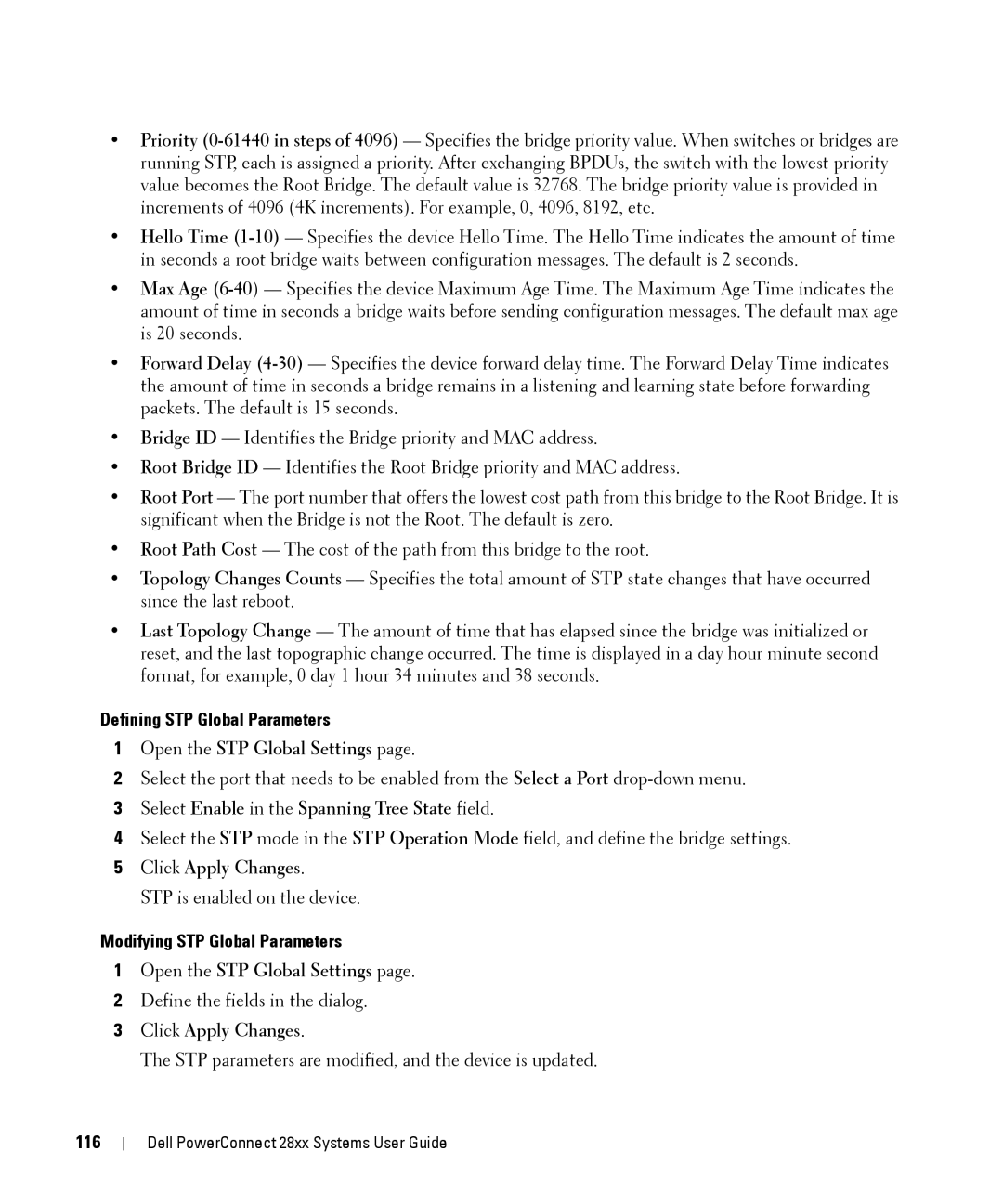•Priority
•Hello Time
•Max Age
•Forward Delay
•Bridge ID — Identifies the Bridge priority and MAC address.
•Root Bridge ID — Identifies the Root Bridge priority and MAC address.
•Root Port — The port number that offers the lowest cost path from this bridge to the Root Bridge. It is significant when the Bridge is not the Root. The default is zero.
•Root Path Cost — The cost of the path from this bridge to the root.
•Topology Changes Counts — Specifies the total amount of STP state changes that have occurred since the last reboot.
•Last Topology Change — The amount of time that has elapsed since the bridge was initialized or reset, and the last topographic change occurred. The time is displayed in a day hour minute second format, for example, 0 day 1 hour 34 minutes and 38 seconds.
Defining STP Global Parameters
1Open the STP Global Settings page.
2Select the port that needs to be enabled from the Select a Port
3Select Enable in the Spanning Tree State field.
4Select the STP mode in the STP Operation Mode field, and define the bridge settings.
5Click Apply Changes.
STP is enabled on the device.
Modifying STP Global Parameters
1Open the STP Global Settings page.
2Define the fields in the dialog.
3Click Apply Changes.
The STP parameters are modified, and the device is updated.
116
Dell PowerConnect 28xx Systems User Guide
